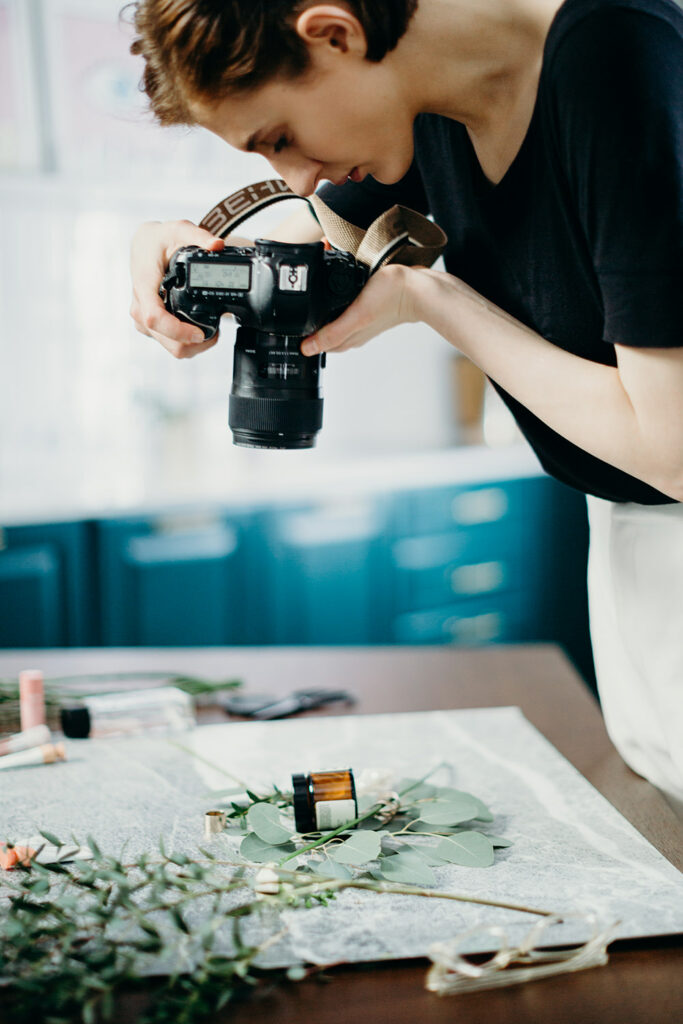
As people continue to demand new products and innovations, businesses will continue emerging. It’s, therefore, no surprise that the market for photography services and especially commercial photography, is growing. After all, these businesses need to showcase their products in advertisements and promotions—something commercial and product photographers can help with. The industry is expected to grow by $9611.08 million in 2027, with a CAGR of 4.39% during the forecast period. That gives current and potential photographers countless opportunities to secure careers in this market for the foreseeable future.
Despite this job security, you should continue improving at your craft if you want to remain competitive and help your career flourish. The first step you can take here is to choose or upgrade to a camera that’s more suitable for commercial photography. This way, you can ensure you get great shots for your clients.
Here are a few things to consider when choosing a camera for commercial photography.
Despite this job security, you should continue improving at your craft if you want to remain competitive and help your career flourish. The first step you can take here is to choose or upgrade to a camera that’s more suitable for commercial photography. This way, you can ensure you get great shots for your clients.
Here are a few things to consider when choosing a camera for commercial photography.
How high its resolution is
Commercial photography aims to showcase a product’s looks and features to gain people’s attention and convince them to purchase it. This is why your camera must be capable of capturing high-resolution images. If it produces shots with more megapixels (MP), it can capture more details. You’ll be better able to take images perfect for both small and large form media—from brochures to billboards—if you have a camera that ensures those photos are as clear as possible.
One of today’s highest-resolution cameras is the Fujifilm GFX 100S. This medium-format camera has a 400MP image capture mode. It works by stitching several high-quality images together to create an even higher-resolution output. With this, you’re sure to capture extremely detailed and compelling product photos.
Its ISO range
Your shooting environment has to be well-lit to capture a product’s details and features more effectively. This is why one common commercial photography tip is to keep the lighting consistent, especially if you’re taking multiple shots and stitching them together for the final product. Aside from getting quality tools like studio lights, you can maximize any available lighting during product shoots by investing in a camera with a wide ISO range.
ISO is a camera setting that controls its sensitivity to light: the bigger the ISO, the more light it can capture. If used right, you can capture well-lit photos even in sub-optimal lighting conditions. One camera with a high ISO is the Canon EOS R5. Its ISO settings reach a maximum of 12,800, making it perfect for use in low-light situations without compromising photo quality.
If it has image stabilization
When shooting product photos, you usually have a set-up that includes different tripods, gimbals, or arms. These ensure that your shots are stable and won’t be blurry or unclear. However, there will be times when you need to shoot in handheld mode. This is especially true when you want to get closer to the product and capture more minute details.t
You can avoid this by getting a camera with excellent image stabilization. Most modern cameras have this feature, but one of the best is the Hasselblad X2D. It has a 5-axis sensor-shift image stabilization effective for up to 7 stops. This feature allows you to slow its shutter speed by over 7 times, guaranteeing stable handheld shooting conditions to achieve product photos of a higher quality.
If it has an internal mirror
Your images shouldn’t depend so heavily on post-processing for perfection. Guaranteeing you get high-quality raw images won’t just mean less work for you. Shots that need to be edited less will come off as more authentic, a factor that appeals to many consumers today. To help you achieve great photos even before post-processing, consider using a mirrorless camera. Compared to other cameras, like DSLRs, these don’t use internal mirrors to show you live previews of your shots.
So while DSLRs can reveal a photo’s composition before you take it, it doesn’t provide a complete picture (pun intended) of how your camera settings will affect the final image. A mirrorless camera can therefore help you both capture your desired angles for a product and adjust your settings to make it look as flattering as possible. One of the best mirrorless cameras today is the Sony Alpha a7R III, which has a 42 MP full-frame sensor that provides previews for a wider range of images. It even has image processing capabilities that can help perfect raw photos straight after they’re taken.
So while DSLRs can reveal a photo’s composition before you take it, it doesn’t provide a complete picture (pun intended) of how your camera settings will affect the final image. A mirrorless camera can therefore help you both capture your desired angles for a product and adjust your settings to make it look as flattering as possible. One of the best mirrorless cameras today is the Sony Alpha a7R III, which has a 42 MP full-frame sensor that provides previews for a wider range of images. It even has image processing capabilities that can help perfect raw photos straight after they’re taken.
Its compatibility with different lenses
Lenses are designed to boost a camera’s versatility, which is especially important when you want to work for different clients with unique requirements for the product photos they want to see. For example, fisheye lenses are great for abstract shots, while the macro lens is specifically designed to capture details at an extremely close range—perfect for taking photos of intricately-designed products. The Fujifilm FUJINON XF 30mm F2.8 Macro Lens is an excellent example of a macro lens featuring 1:1 magnification and a 10cm minimum focusing distance.
However, you need to make sure you’re using a camera compatible with the specific lens you have in mind. You’ll have to use a lens mount adapter on your camera for incompatible lenses, so compatibility should be a major factor in your purchasing decision if you want to use this accessory in your shoots. A good rule of thumb is to use cameras and lenses from the same brand—for example, most Fujifilm cameras will be compatible with the FUJINON XF 30mm F2.8 Macro Lens mentioned above.
Commercial photographers need high-quality cameras to do their jobs properly. With this article, may you find the best camera for your career.





